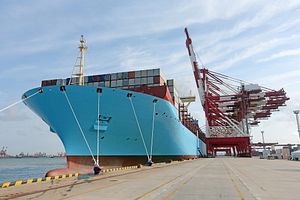China’s hot money flows are evident through imbalances in the current and capital accounts. These flows have made it difficult for China’s leadership to control monetary policy and to prevent particular markets, such as the real estate market, from obtaining excess capital. Net hot money flows into China when the economy is growing, and flows out of China when the economy is flagging.
Hot money has been funneled into and out of China through the trade account, by misinvoicing of exports or imports, and, to a lesser degree, through misspecification of foreign direct investment. The direction of misinvoicing or misspecification depends on whether funds are flowing into or out of China; for example, export overinvoicing is used to bring funds into China, while export underinvoicing is done to send or keep funds outside of China, and so on.
Understanding trade misinvoicing for China is notoriously difficult due to insufficient data and supplementary information, especially information on labor and capital value added by product category. The typical way hot money is understood is in the aggregate, by looking at Errors and Omissions in the Balance of Payments. This is because without knowing whether trade data given is accurately reported according to real invoices, or whether it is inflated or deflated in order to maintain some policy target, and without knowing whether the data even makes sense, as assumptions must be made about the type of processing that is done in each sector, one cannot truly ever ascertain exactly how much money, in which categories, is flowing into or out of the economy.
Recently, however, I realized that there is a way to track hot money flows for commodities. I believe this represents a potentially major contribution to the study of these illicit flows. The method is as follows: I take the commodity category, such as wheat, and find data on the quantity of wheat sold over a certain period, as well as the value it was sold at over the same period, to obtain the unit value. The wheat should have been sold at or around the world price for wheat – within, say, a band of 50 percent of the world price in either direction. I compare the world price of wheat to the unit value of the exported wheat. If the value greatly diverges, I conclude that either the data is flawed, or that trade misinvoicing is taking place.
My results thus far show that looking at the period from 2008 onward, much of the data follows appropriately – unit values generally track the world price of commodities. However, there are anomalies in China’s commodity sector in several areas. Just examining the iron ore, wheat, corn, crude petroleum, swine, and rice sectors, I find that in 2010 in the wheat sector, there appears to be massive export overinvoicing; in 2009 and 2010 in the swine sector, there is mild export overinvoicing; in 2011 and 2012 there is moderate overinvoicing in the rice sector; in all years examined except 2011 in the iron ore sector, there is moderate export overinvoicing. I find no evidence of export underinvoicing in any of these commodity sectors. I emphasize that I use world prices of commodities within a 50 percent band and that where I indicate overinvoicing, unit prices of these commodities exceed these numbers.
My results are in line with what is generally believed about the direction of hot money flows associated with China; that since the global crisis took root in 2008, hot money flowed out of the U.S. and Europe and into China. These results are being expanded into an academic paper and other channels, in which commodity import misinvoicing is also addressed.
I believe this is simple but relatively strong method for approaching the issue of trade misinvoicing – for China or any other country. I do not believe any sector utilizing a variety of technologies and combinations of capital and labor, such as manufacturing subsectors, can accurately trace trade misinvoicing (although I have tried), because of the complexity of the problem. I do believe that using this method for commodities is entirely defensible, given that commodities should be sold at the world commodity price to begin with.
Follow Sara Hsu on Twitter @SaraHsuChina.

































